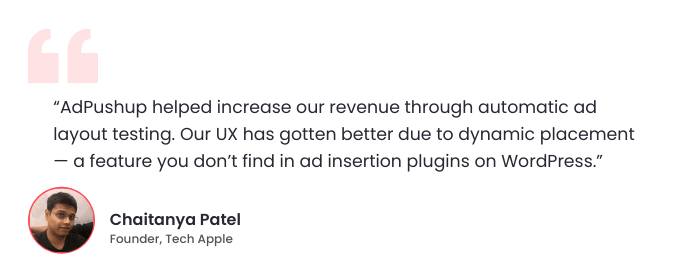7 Digital Ad Publishing Trends. We’ve gathered a variety of industry digital ad publishing trends on what 2022 could hold for publishers.
Digital Ad Publishing is increasingly focused on the more personalized, targeted, and valuable, as consumers want the right ad, at the right time, on the right device, right now.
In 2022, the digital ad publishing space will continue to evolve and there will be new opportunities for brands and publishers to build their audience, generate revenue, and grow their business.
According to the eMarketer forecast, global digital ad spending will increase by 15.2% over the last year and reach $524.31 bln in 2022.
The research shows that automation in Programmatic advertising is one of the top trends of 2021-22. And around 41% of marketers say that AI and machine learning have had the most impact on their ad revenue growth and performance.
To learn more about these emerging trends in 2022 and beyond, we have put together a list of the most important digital publishing trends to track this year.
Digital Publishing Trends of 2022
Brand Building
In 2022, publishers will need to shift their focus to strengthen brand building. One of the primary ways to do this is through community building. In the wake of the pandemic, many consumers feel the need to find their own digital community to subsidize the lack of in-person communication. In addition, many are wanting current and reliable information. This results in consumers seeking information outlets that consistently produce quality content.
Due to this need, many publishers have begun to build their own community platforms and focus on gathering consumers’ data to be better informed about their audience. Once a publisher knows who their audience is, it is easier to create content that their audience wants to see.
Search Optimization
Investing in SEO is becoming crucial as the market becomes more and more saturated. Following the latest trends and practices can not only make a publication discoverable, but also helps them generate advertising revenue. In 2022, many digital publishers are optimizing their website layout to improve user experience.
In addition, they are focussing heavily on SEO to see an increase in readership, audience interactions, and content redistribution. If a digital publisher wants to bolster its credibility, then creating quality content is a must. Audiences are typically more engaged with content and information they deem valuable. By tailoring content to user needs and wants, publishers will see a higher success rate.
Not only does high-quality content increase reputation and user retention, but it also attracts the right audience via keywords and can even get a user to take action on a given website. It also increases a web page’s search ranking.

User Engagement
User engagement is essentially a way publishers can assess an individual’s response to a digital product. User engagement is crucial because engaged users are the ones who are likely to buy or share feedback. Digital publishers track user engagement by monitoring a user’s activities such as downloads, clicks, and shares.
User engagement is often correlated with the overall profitability of a digital publication. When a user deems a product valuable, they will spend time engaging with it. This allows digital publications to make a profit by showing users ads or promoting subscriptions when they are on the page.
Automation & AI
Digital publishers are using AI-Generated content that revolves around the concept of persistence, and personalization. Publications are working to create original and high-quality content to attract their target audience. In order to produce at a higher volume faster, AI content aggregation helps. Through machine learning, AI can recognize trending and current stories. This allows more dated original content to resurface on a platform and trend along with a current story of similar nature.
Algorithms and AI allow digital publishers to know their audience better than ever. The tech is analyzing multiple pieces of user data like how they interact with a site, their preferences, clicks, etc. This information is used to produce a detailed profile of an audience and helps to develop a content strategy of how best to serve them.
Cookieless Solutions
Cookies are quickly becoming a thing of the past. What’s more, on June 24, 2021, Google announced its plans to phase out third-party cookies in its Chrome browser leading up to 2023.
The newest prediction is that publishers can start phasing out cookies. With cookies gone, this will create a massive shift in the market. Ads will target users in new ways. Many think advertisements will be more personalized than ever before. Currently, 80% of marketers depend on third-party cookie data.
70% of digital publishers believe that the removal of third-party cookies will result in a change in marketing technology. With cookies depreciating, consent-based first-party data is on the rise. With this new data, ads can become more personal and publishers are hoping to see higher revenue streams from it.
Video Ads
Incorporating multiple different media types on a given page can help boost user engagement. The reason is that it provides something for everyone. Including an in-browser video to pair with an article, or linking a podcast on the same page can be useful to users who want to engage with a digital publication in different ways.
Videos have shown success in bridging the gap between text and real-world application. It increases user retention as well. In addition, creating other media types for a given set of materials allows publishers to get more out of a given topic. This way there is a constant cycle of content a publisher can put out for their audience.
Mobile-First Approach
The importance of mobile optimization is becoming apparent. Publishers are beginning to optimize their ads to serve mobile users as they are quickly becoming just as important as a computer or tablet.
Joining in on the mobile-first trend allows digital publishers to boost their traffic. Ads that aren’t easy to read on mobile are often instantly navigated away from and receive low engagement. Rightly so, readers want mobile-friendly and responsive ads for a better reading experience overall.
In the End
Things are changing fast, so it is important for digital publishers to stay up to date on emerging trends. With the right information, digital spaces can prepare themselves for changing advertising practices and have up-to-date content strategies to better serve their audience.
The hope is that these new digital ad publishing trends result in higher user retention and profits. To learn more about how AdPushup is adopting these trends and pushing the boundaries forward, book a demo here.
FAQs
E-books, digital magazines, and digital libraries and catalogues are all part of electronic publishing (also known as digital publishing, online publishing, or online publishing).
“The digital publishing market is expected to grow by $65.31 billion during 2021-2025, with a CAGR of 12.66 percent.” Digital space and current publishing trends will shape the future of openly accessible online content in the future.
Mobile optimization technology allows sites to reformat themselves completely for mobile devices, ensuring a better user experience. Mobile-optimized sites are configured with the mobile user in mind, and they usually have a separate URL from responsive sites.

Shubham is a digital marketer with rich experience working in the advertisement technology industry. He has vast experience in the programmatic industry, driving business strategy and scaling functions including but not limited to growth and marketing, Operations, process optimization, and Sales.







